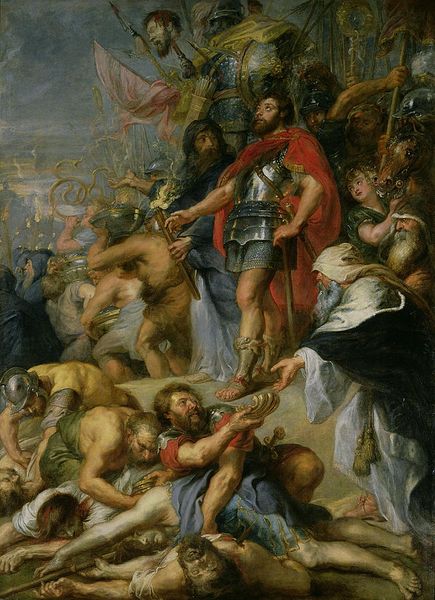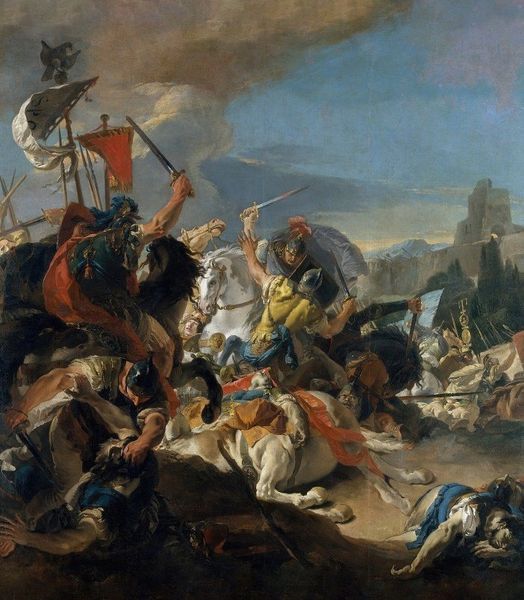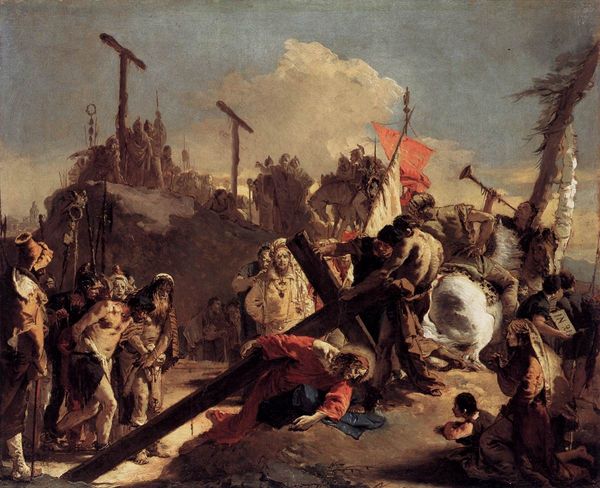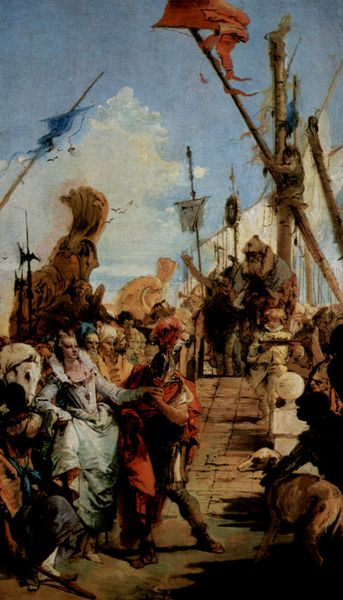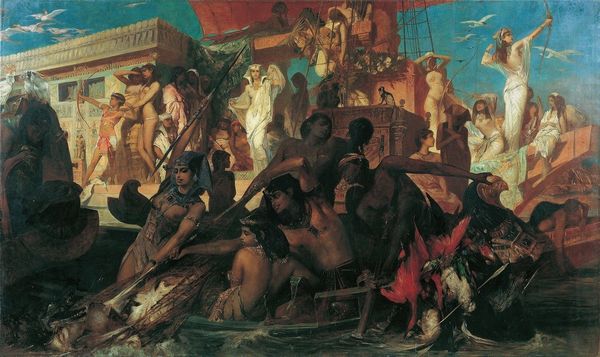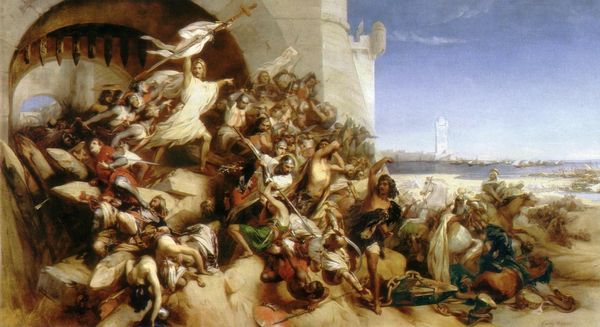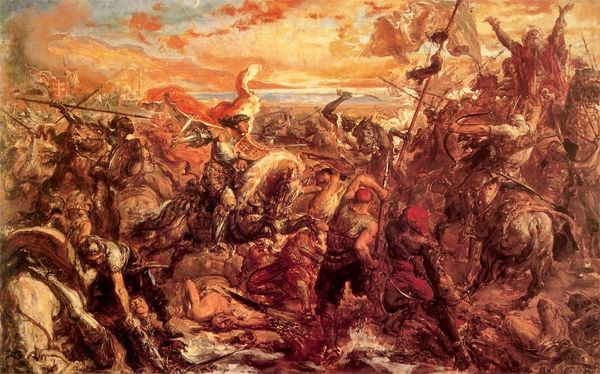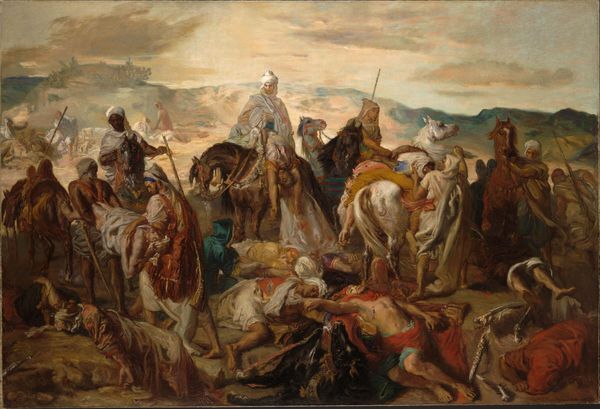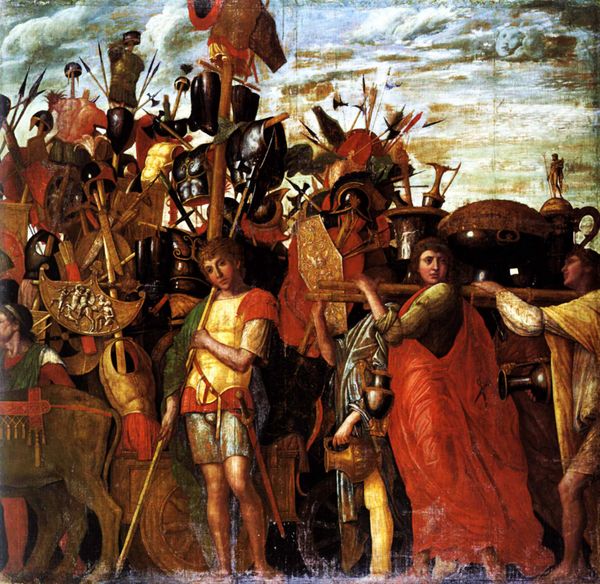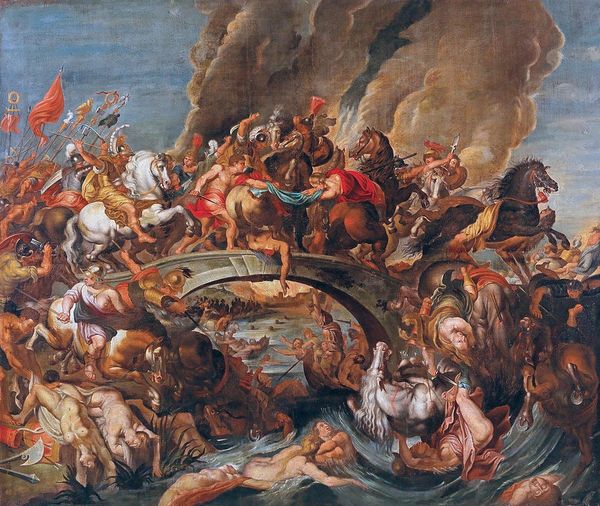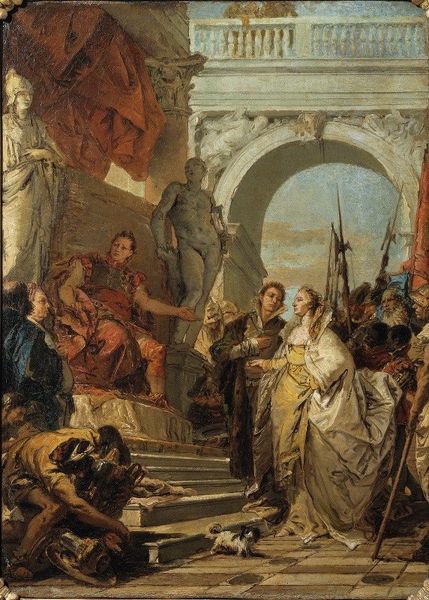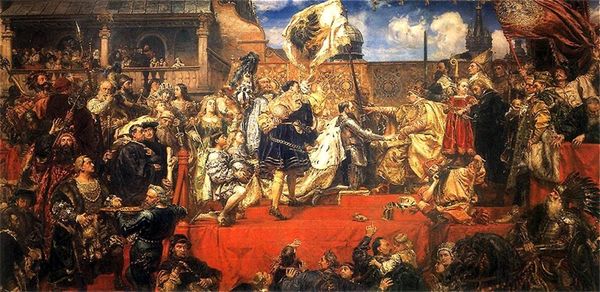
painting, oil-paint
#
narrative-art
#
painting
#
oil-paint
#
war
#
soldier
#
romanticism
#
history-painting
Dimensions: 411 x 497 cm
Copyright: Public domain
Curator: Delacroix's large-scale oil on canvas, "The Crusaders' Entry into Constantinople, 12th April 1204", painted in 1840, is a powerfully dramatic piece of historical narrative. Editor: It is overwhelming, even a bit chaotic, with such dense layers of emotion and movement. The colour palette amplifies the scene's overall intensity. Curator: Delacroix focuses on the symbolic clash of cultures and religions during the Fourth Crusade. We can see how the Crusaders, depicted as figures of dominance and strength, enter the conquered city. Their banners signal triumph. Editor: The painting serves as a complex visual testament to the brutality and ramifications of religious and political conflict. What does this invasion tell us about the intersection of faith, power, and historical memory? How do such visual narratives reinforce cultural trauma? Curator: Interestingly, Delacroix, working in the Romantic style, uses colour to convey emotions tied to this traumatic event. Notice the interplay of dark tones evoking violence with flashes of vibrant colours representing the fading Byzantine opulence. These artistic elements communicate more than history, it gives us insight into the emotional and moral atmosphere surrounding such events. Editor: Absolutely. And it invites us to critically examine the dynamics of historical representation. Are these Crusaders righteous conquerors or instruments of devastation? Where does empathy lie in his rendering? Curator: The fallen and mourning figures, for example, signal this complexity; the visual weight communicates both the cost of war and the shifting tides of cultural memory. It suggests a rupture in a cultural narrative, replacing it with a Crusader image of power. Editor: Exactly, these fallen figures, especially, point to larger questions around the legitimacy of conquests and cultural imperialism and provide a framework for talking about accountability, historical justice, and our moral obligations in confronting past wrongs. It also makes me question my own historical understanding, wondering about who isn't included in this scene and asking if this narrative is at all unbiased. Curator: Delacroix gives us potent visual language to grapple with those complex layers of historical trauma, both on an emotional and an intellectual level. Editor: Seeing through today's social and political lens adds new perspectives that enrich, and question, Delacroix's portrayal.
Comments
No comments
Be the first to comment and join the conversation on the ultimate creative platform.
